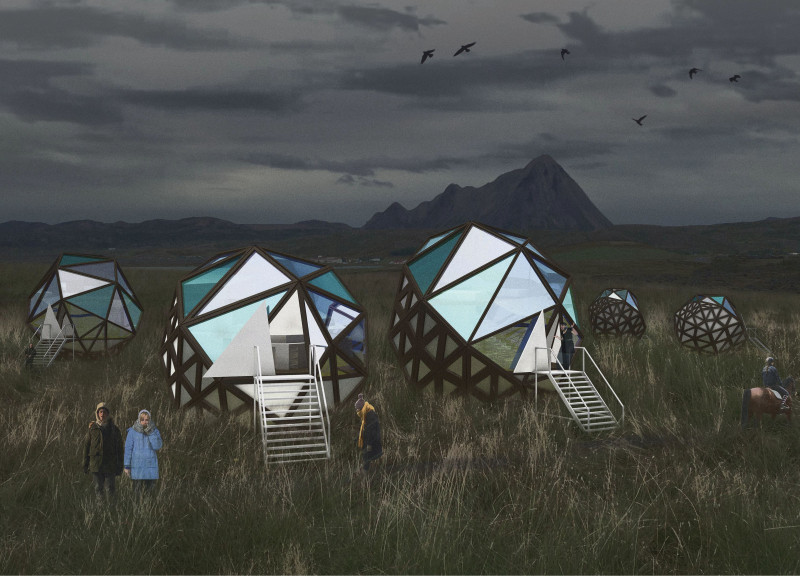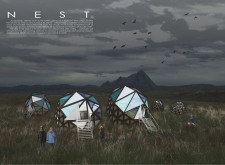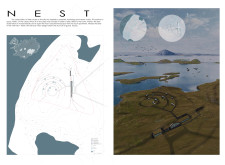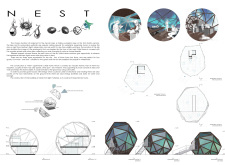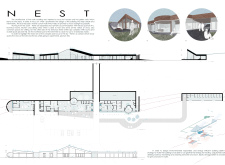5 key facts about this project
### Project Overview
Located near Mývatn Lake and adjacent to the Krafla volcano in Iceland, the design comprises a series of accommodation units aimed at providing visitors with an unobstructed view of the Aurora Borealis. The project draws inspiration from Icelandic mythology, specifically the concept of "NEST," which symbolizes homecoming and connection to the natural environment. The architecture emphasizes an integration with the surrounding landscape, enhancing the experience of observing this natural phenomenon.
### Architectural Form and Function
The accommodation units are geodesic dome structures that resemble bird nests, utilizing organic forms to create a harmonious blend with their environment. Each dome is oriented to optimize views of the Northern Lights, with elliptical shapes facilitating the visitor experience. The facades are constructed from wooden frames and expansive glass elements, which not only reflect the vibrant colors of the Aurora Borealis but also capture natural light. The thoughtful arrangement of the units follows a circular layout, fostering community among guests while ensuring unobstructed sky vistas. A central communal building accommodates dining and relaxation areas, providing shelter and encouraging social interaction.
### Sustainability and Material Use
The project prioritizes sustainability through its choice of materials and energy-efficient systems. Structural framing predominantly uses wood, underscoring both warmth and environmental considerations. Glass elements maximize visibility and natural illumination, while insulation ensures thermal efficiency during colder months. Steel frames enhance structural resilience against variable weather conditions. Furthermore, the implementation of solar panels for energy production and comprehensive water management systems, including rainwater collection, signifies a commitment to reducing the ecological footprint. This approach not only addresses current environmental challenges but also positions the project as a potential model for future developments in sensitive ecological areas.


